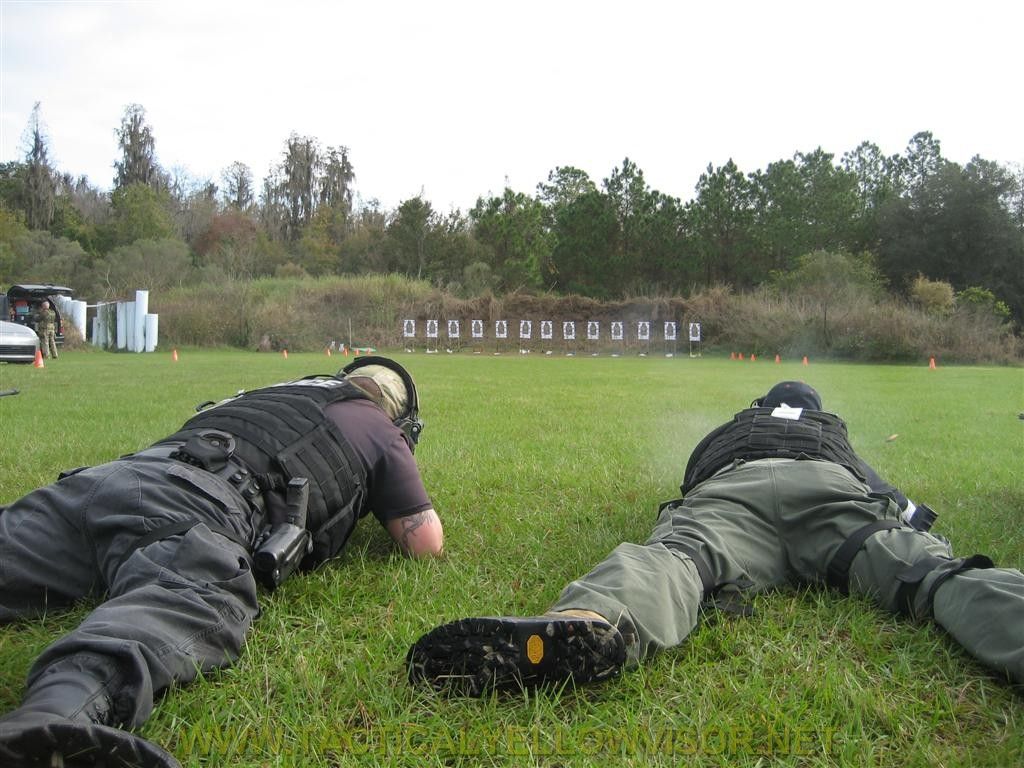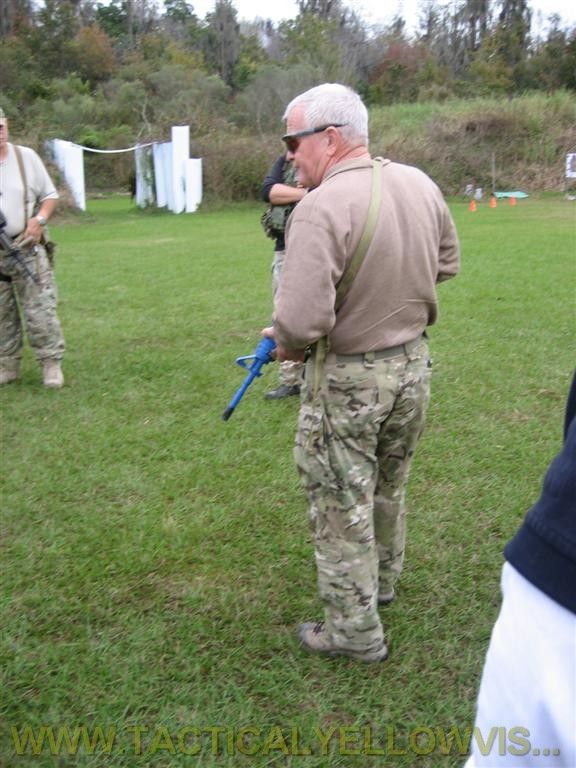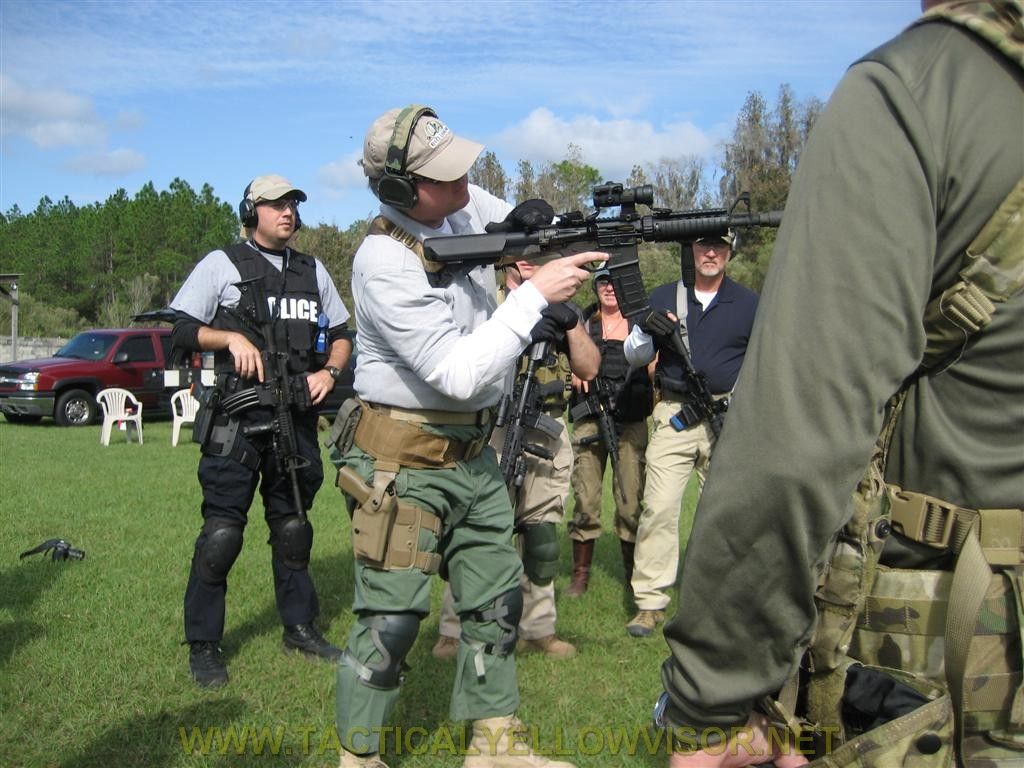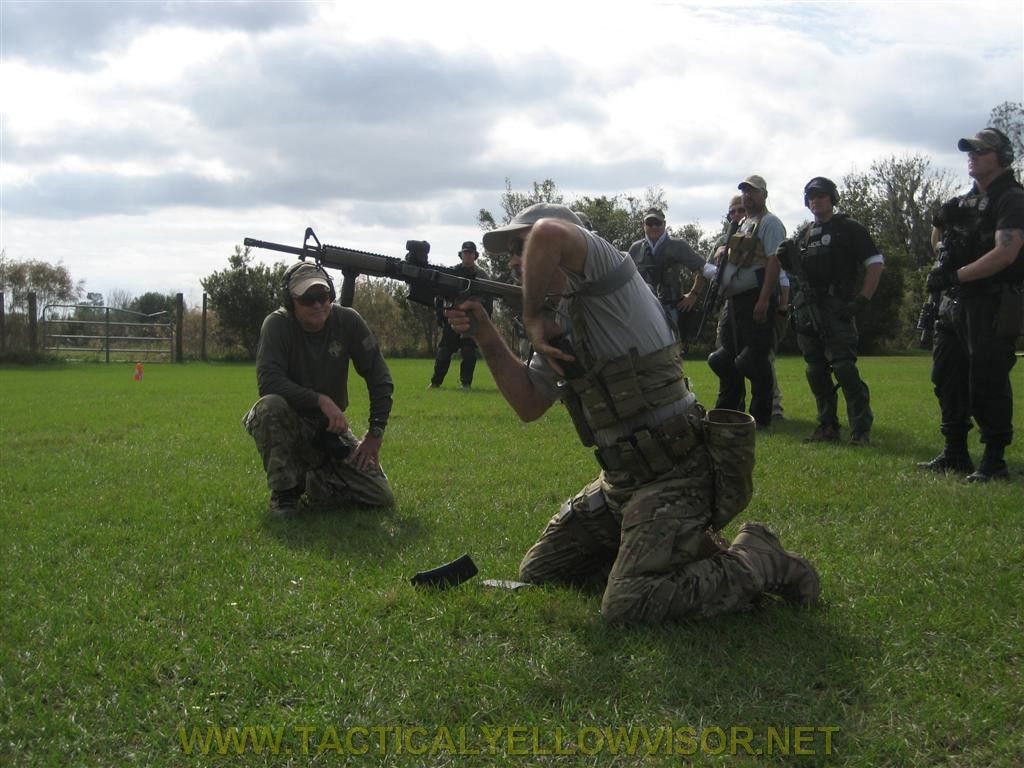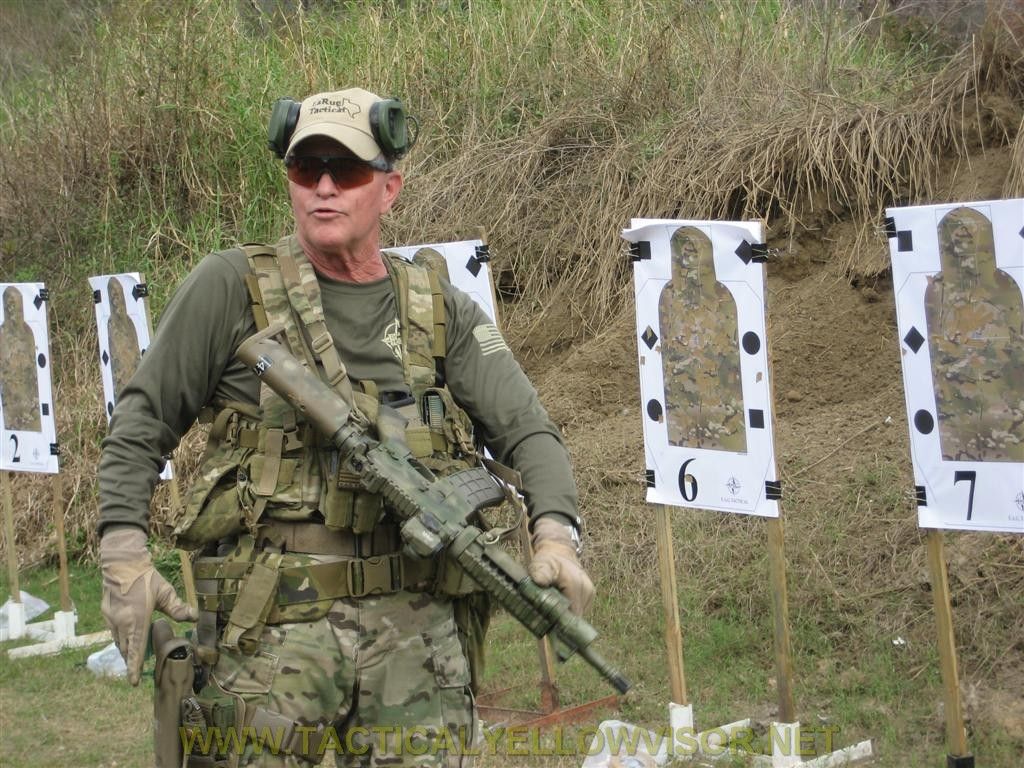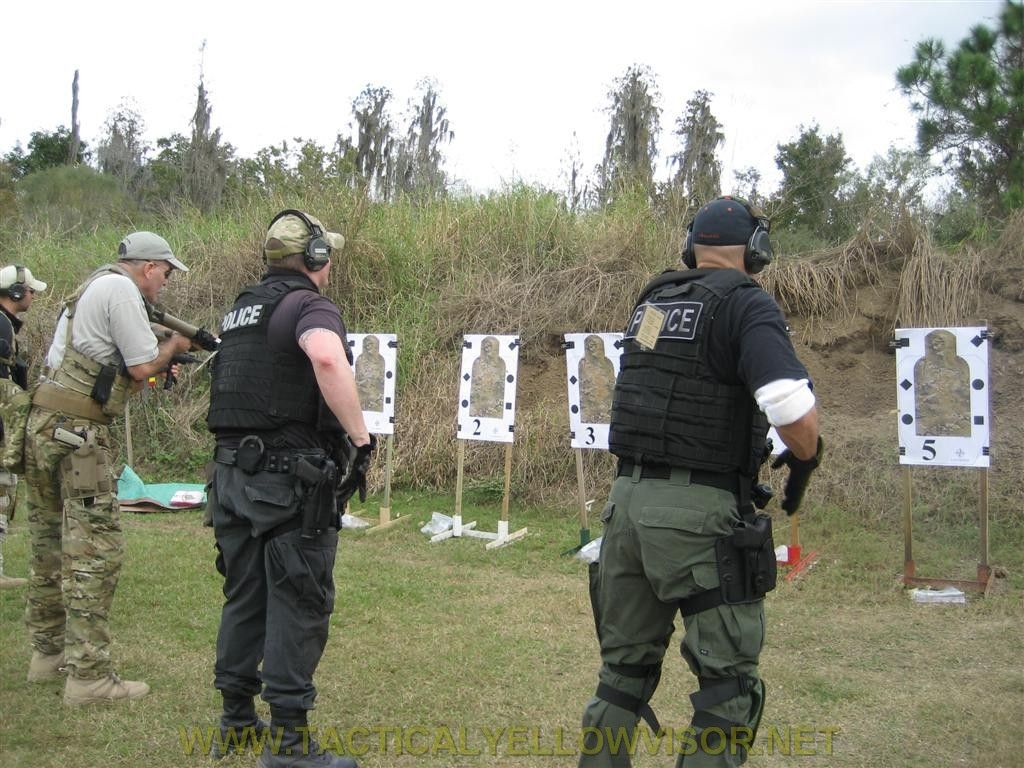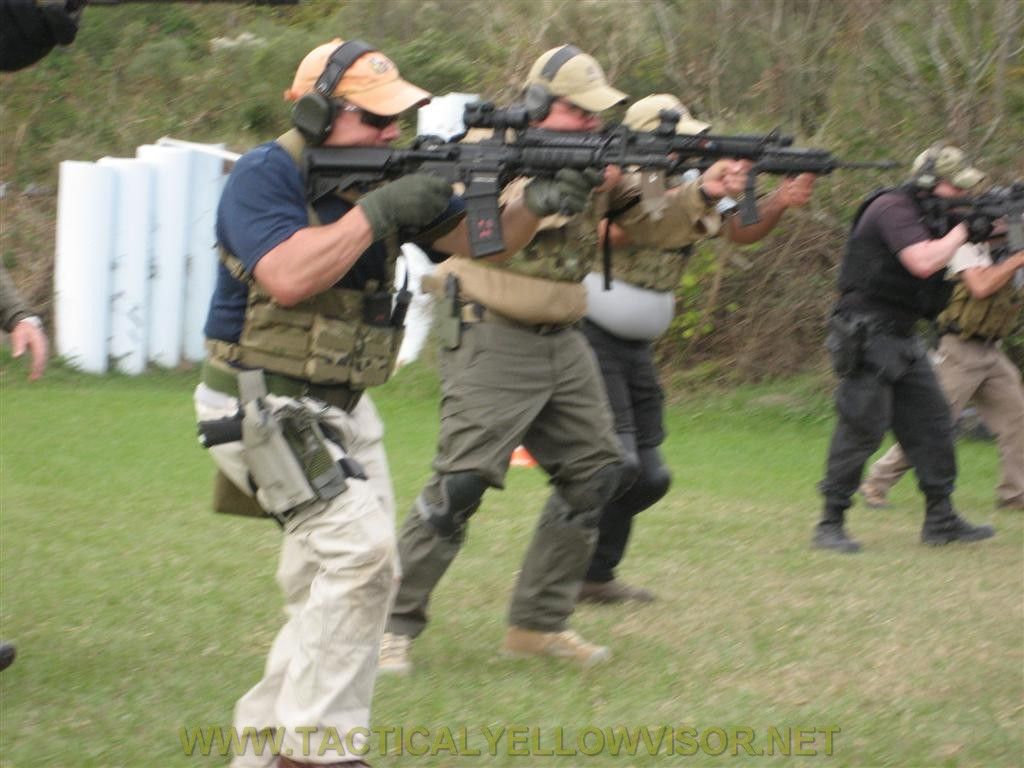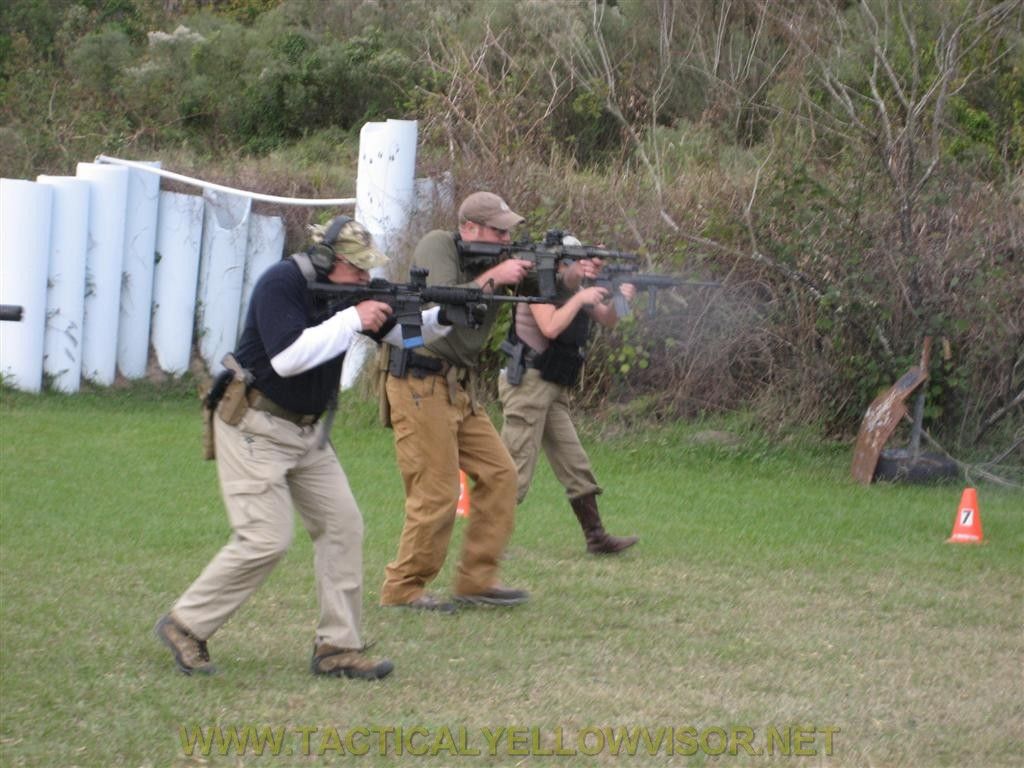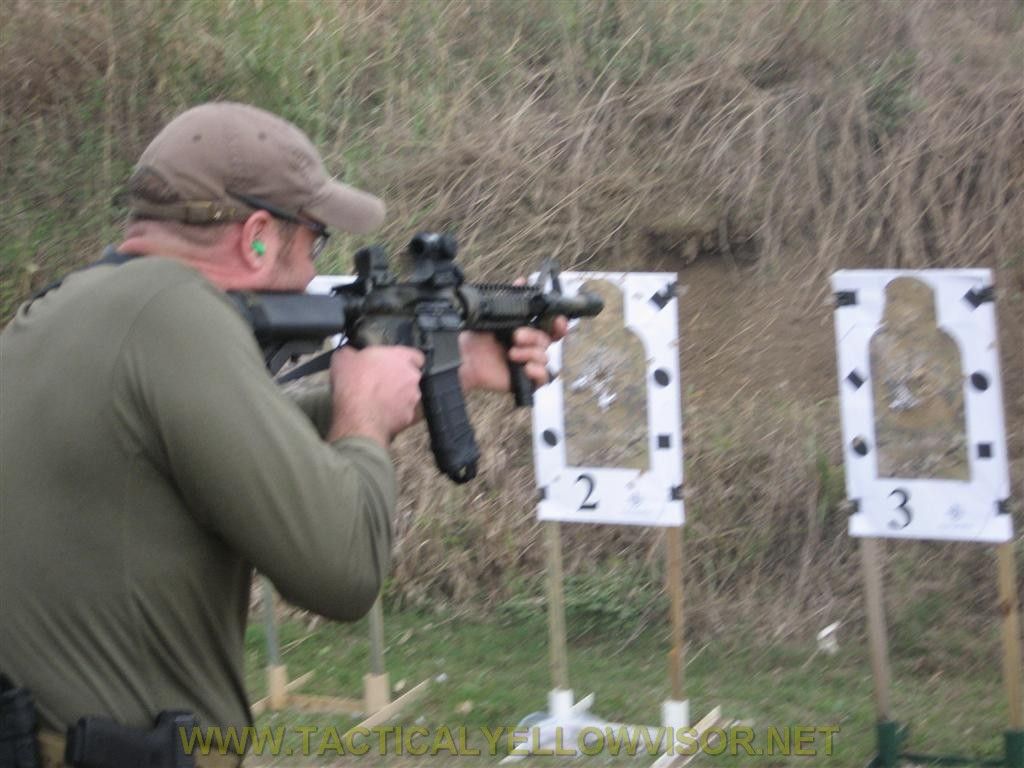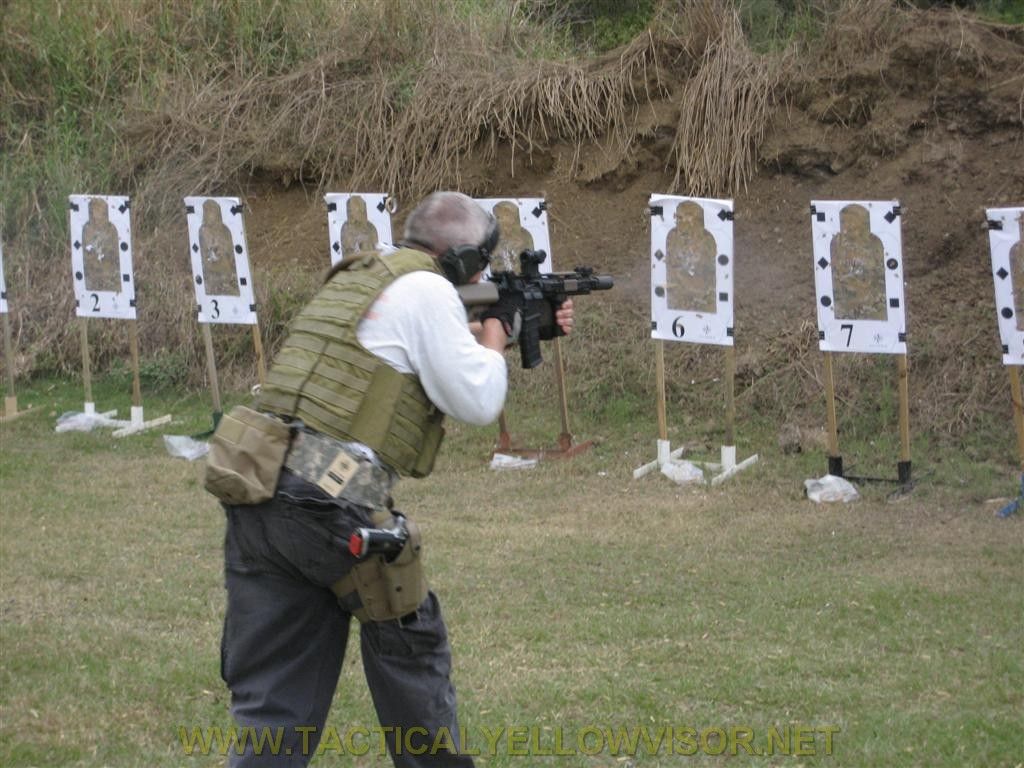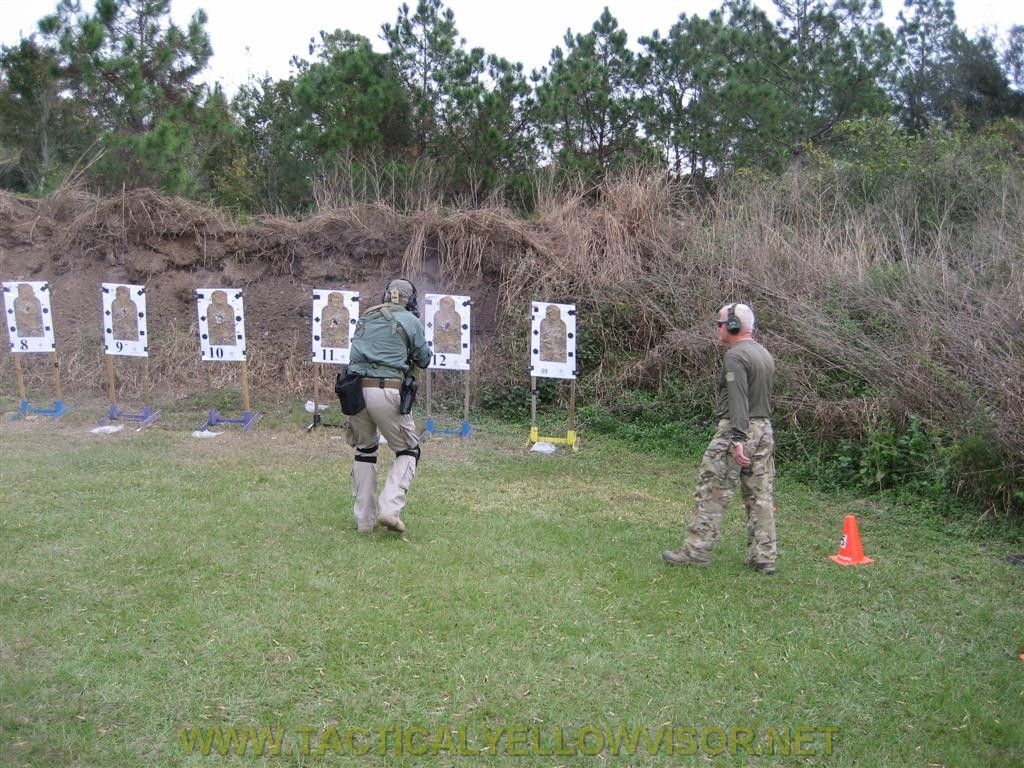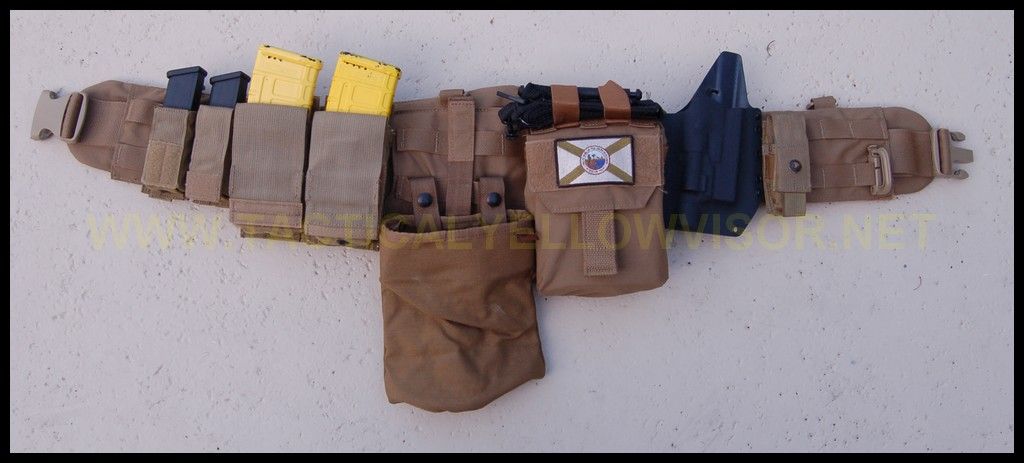This was my fourth time with Pat and Mike in Lakeland. It's been interesting over the years to see how the classes morph and change and what new lessons and drills they bring with them.
For those that haven't attended one of Pat's classes, everything is building one lesson on another from the first shot fired to the last, stringing skills together and building and stacking them as the drills get more and more complex.
TD1 began with a discussion of safety and then moved quickly on to gear. Magazines, optics, etc. Pat gets to see a lot of gear every year, and spending the morning getting a little bit of insight into that experience is one of the benefits of attending EAG classes. The shooting began shortly before lunch when we all moved out to the 50 for a lesson on prone before checking and getting a zero at 50 yards.
shooters getting their zero
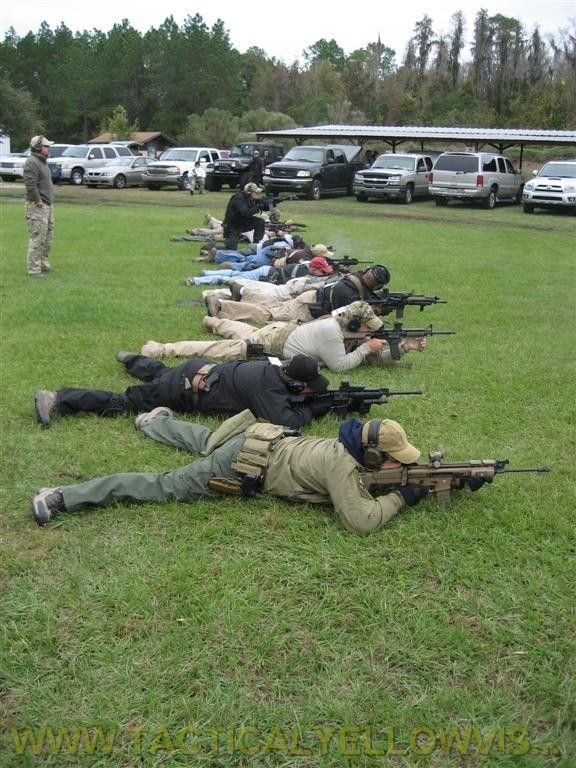
After lunch we moved close in to work on mechanical offset of optics as well as trigger control. Drills were fired with each step on command starting from the 3 yard line and then repeated at various distances out to the 15. Drill was fire, holding the trigger to the rear, ease to reset, fire again, ease to reset and fire a third time, all done on the verbal command.
Pat demonstrates drill
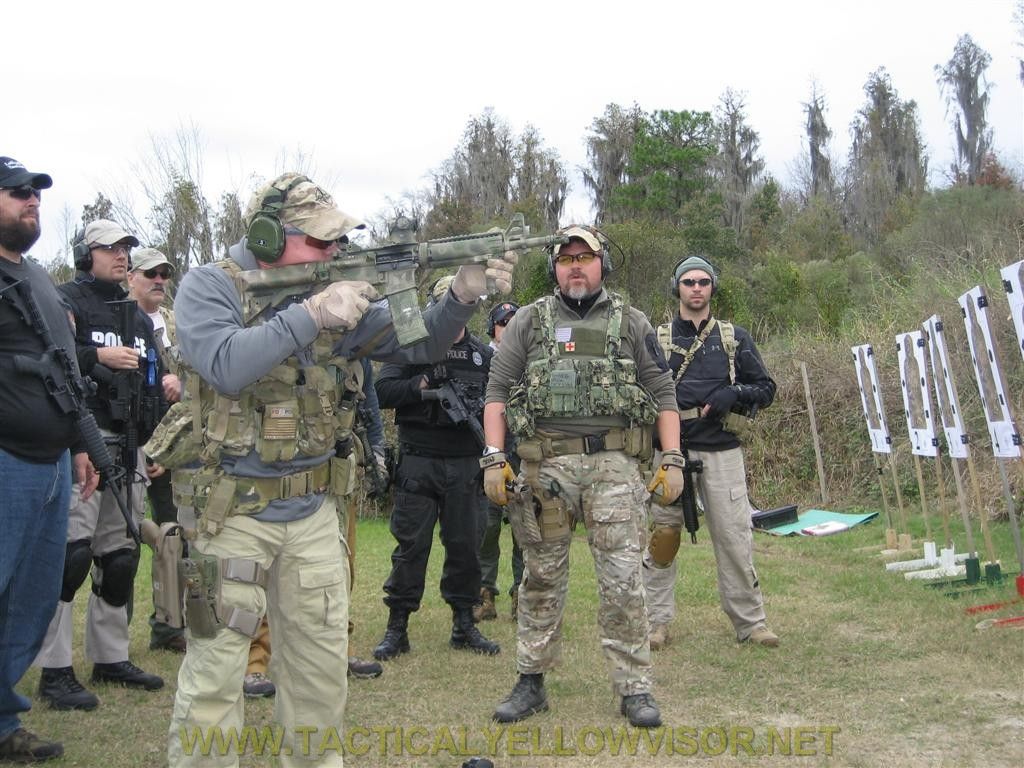
shooters working the drill a little further out
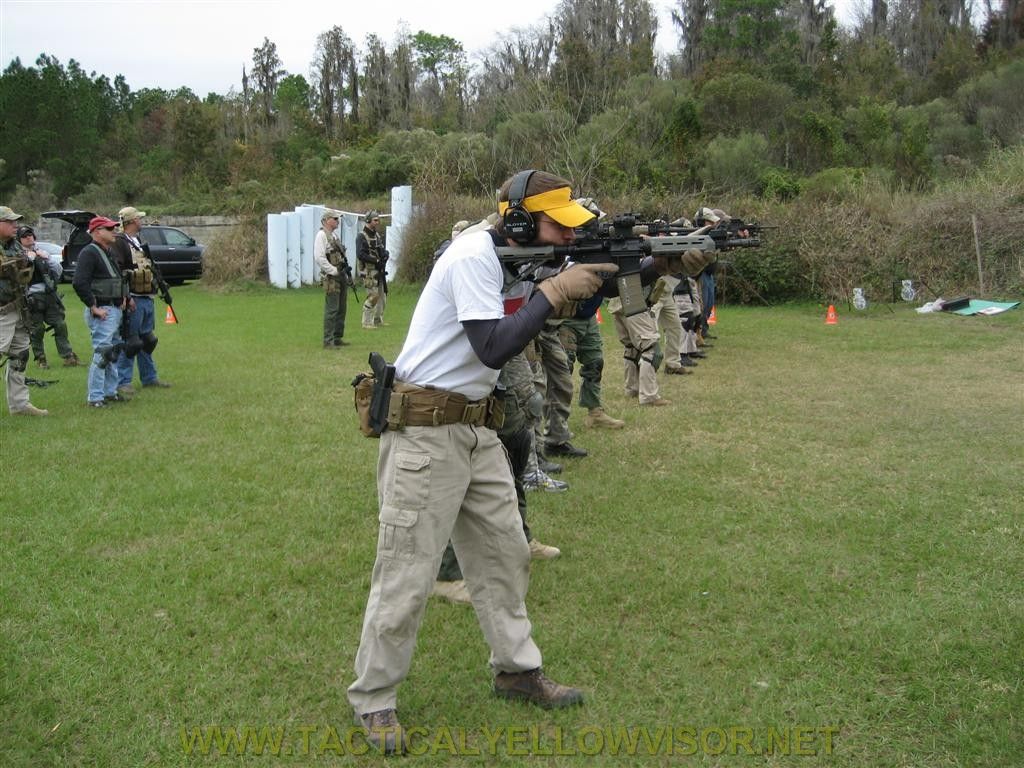
We next learned several target engagement methods that we would use over the course of the three days to include controlled pairs, hammers, failure drills, and tthe Non-Standard Response (NSR). We then worked these drills at various distances from the 5 to the 25 yard line.
student fires NSR
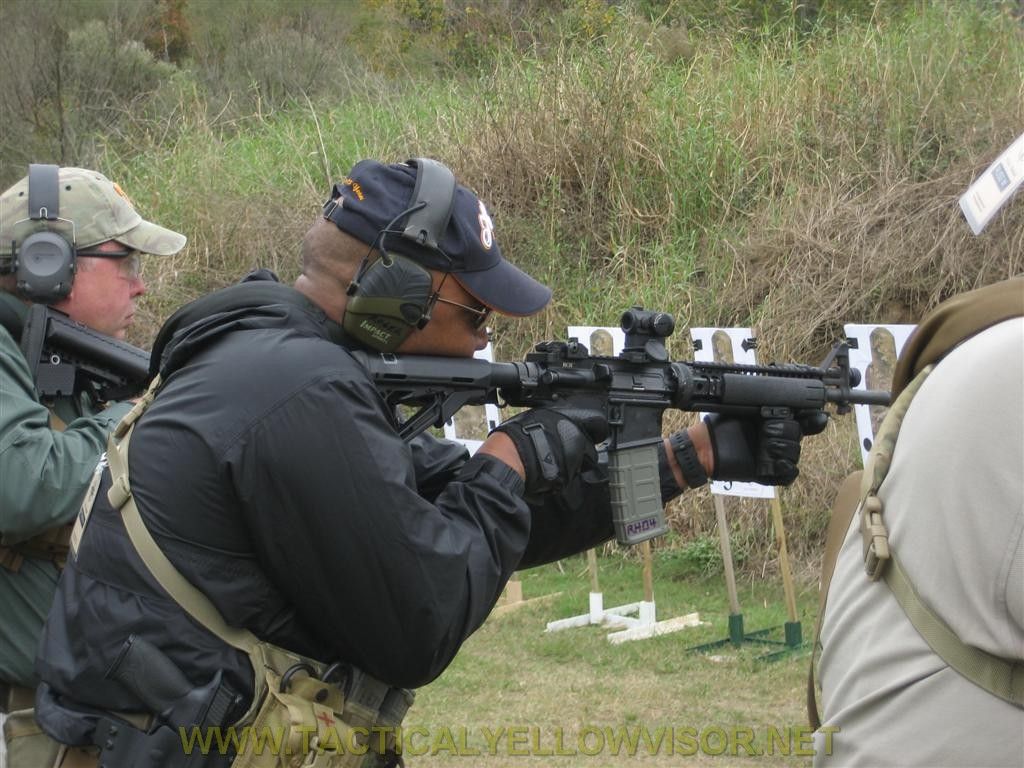
Then it was on to the 25 yard line where Pat and Mike demonstrated various positions from braced kneel, to quick kneel, double kneel ("Monica") and squat.
Pat and Mike demonstrating squat
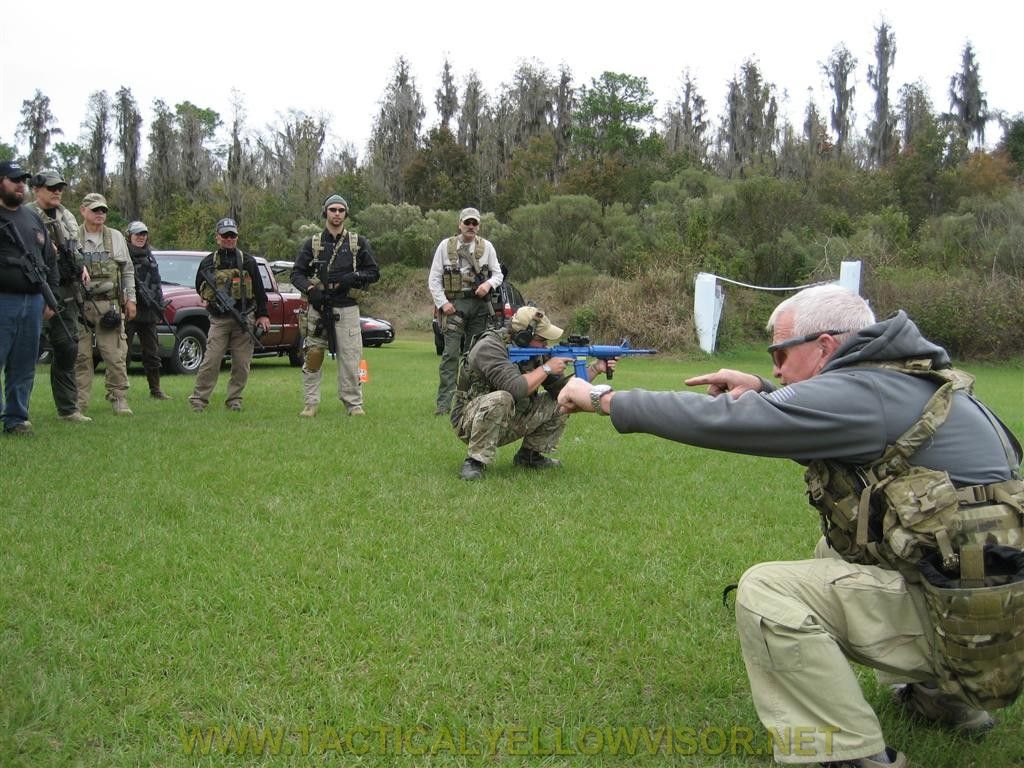
students work Monica from high, low, leaning right, leaning left
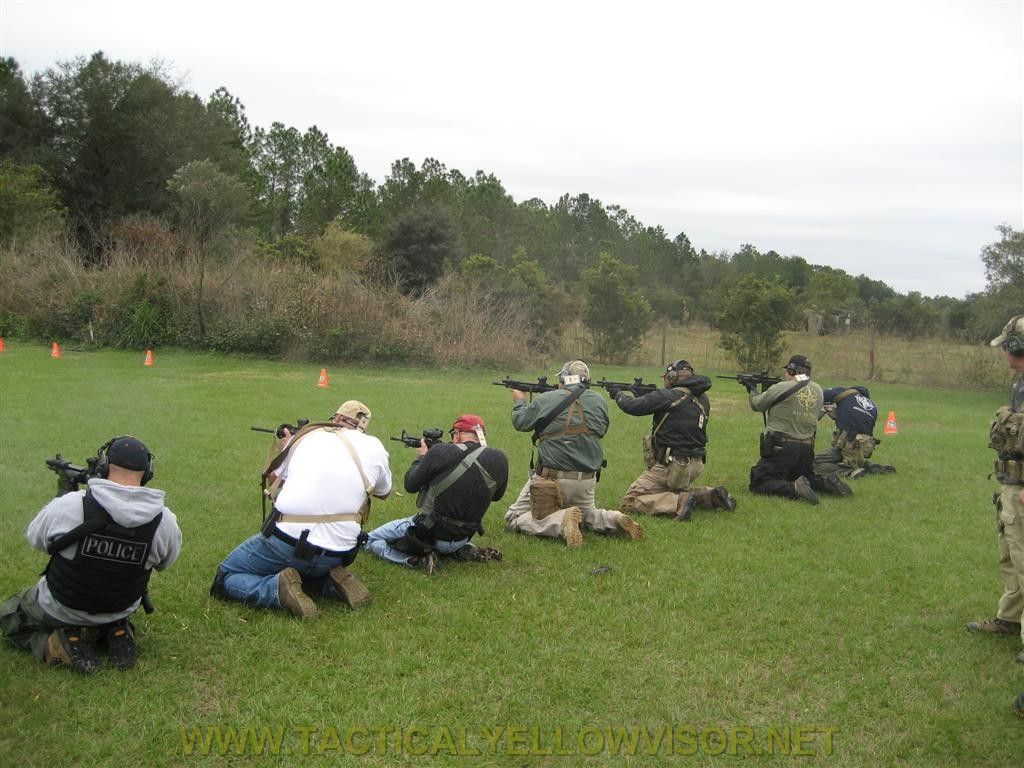
The next skill is the speed reload. As usual Pat and Mike demonstrate, and then we get our chance to try it and practice what they demonstrate. The building begins from here. We begin to string the basics together by firing a drill going from standing to kneeling to prone with a speed reload in between. While this may sound like a simplistic drill, it is deceiving based on the number of shooters that bumble such a seemingly easy drill.
shooter reloads before going to prone (note two magazines on the deck, first from standing to kneeling)

We finished the day going over controlled pairs, hammers, failure drills, and NSRs at close range again
shooters finishing out TD1

more to follow.

